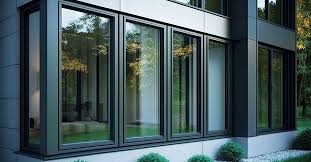
In the quest for energy efficiency and environmental sustainability, one of the most promising innovations in building technology is vacuum glazed windows. These cutting-edge windows are designed to provide superior thermal insulation, surpassing the capabilities of traditional double and triple-glazed windows. This article explores the science behind vacuum windows, their benefits, and their potential impact on the future of architecture and energy consumption.
What Are Vacuum Windows?
Vacuum windows, also known as vacuum-insulated glazing (VIG), consist of two glass panes separated by a narrow vacuum gap. Unlike conventional windows, which rely on air or inert gas fills to provide insulation, the vacuum between the panes in VIG effectively eliminates heat transfer through conduction and convection. This results in a window with significantly better thermal performance.
The Science Behind Vacuum Windows
The vacuum space in VIG is typically only a few micrometers thick. This thin vacuum gap is sufficient to prevent the transfer of heat because there are no gas molecules to conduct thermal energy. To maintain the vacuum, the edges of the glass panes are sealed with a durable, airtight material. Additionally, tiny spacers are used to keep the panes apart, ensuring the structural integrity of the window.
One of the key challenges in the development of vacuum windows is maintaining the vacuum over the long term. Advances in materials science and manufacturing techniques have led to the creation of robust seals and spacers that can preserve the vacuum for many years, making VIG a viable option for both residential and commercial buildings.
Benefits of Vacuum Windows
- Superior Thermal Insulation: Vacuum windows offer exceptional thermal insulation, with U-values (a measure of heat transfer) significantly lower than those of traditional double or triple-glazed windows. This means that buildings equipped with VIG can maintain a comfortable indoor temperature with less reliance on heating and cooling systems, leading to substantial energy savings.
- Noise Reduction: The vacuum gap in VIG also acts as an effective sound barrier, reducing the transmission of noise from the outside. This makes vacuum windows an excellent choice for buildings in noisy urban environments or near busy roads.
- Slim Profile: Despite their superior insulating properties, vacuum windows are often thinner than traditional double or triple-glazed windows. This slim profile allows for greater design flexibility and can be particularly advantageous in retrofit projects where space constraints may be a concern.
- Longevity: With advancements in sealing technology, vacuum windows are designed to maintain their insulating properties for many years. This durability translates to a lower total cost of ownership, as the windows do not need to be replaced as frequently as their conventional counterparts.
Applications and Future Potential
The adoption of vacuum windows is growing across various sectors. In residential buildings, they provide homeowners with a comfortable living environment and reduced energy bills. In commercial settings, VIG helps businesses achieve energy efficiency goals and improve the acoustic performance of office spaces.
Looking ahead, the potential for vacuum windows extends beyond traditional buildings. Researchers are exploring their use in transportation, such as in high-speed trains and electric vehicles, where superior insulation can contribute to energy efficiency and passenger comfort.
Challenges and Considerations
While vacuum windows offer numerous benefits, there are still challenges to overcome. The initial cost of VIG can be higher than that of traditional windows, which may deter some consumers. However, the long-term energy savings and durability of vacuum windows can offset this initial investment.
Manufacturing vacuum windows also requires precision and advanced technology, which can limit the availability and increase the cost. As the technology matures and production scales up, it is expected that prices will become more competitive.
Conclusion
Vacuum windows represent a significant advancement in building technology, offering unparalleled thermal insulation, noise reduction, and design flexibility. As the world continues to prioritize energy efficiency and sustainability, vacuum windows are poised to play a crucial role in shaping the future of architecture. By investing in this innovative technology, we can reduce energy consumption, lower carbon emissions, and create more comfortable living and working environments for generations to come.